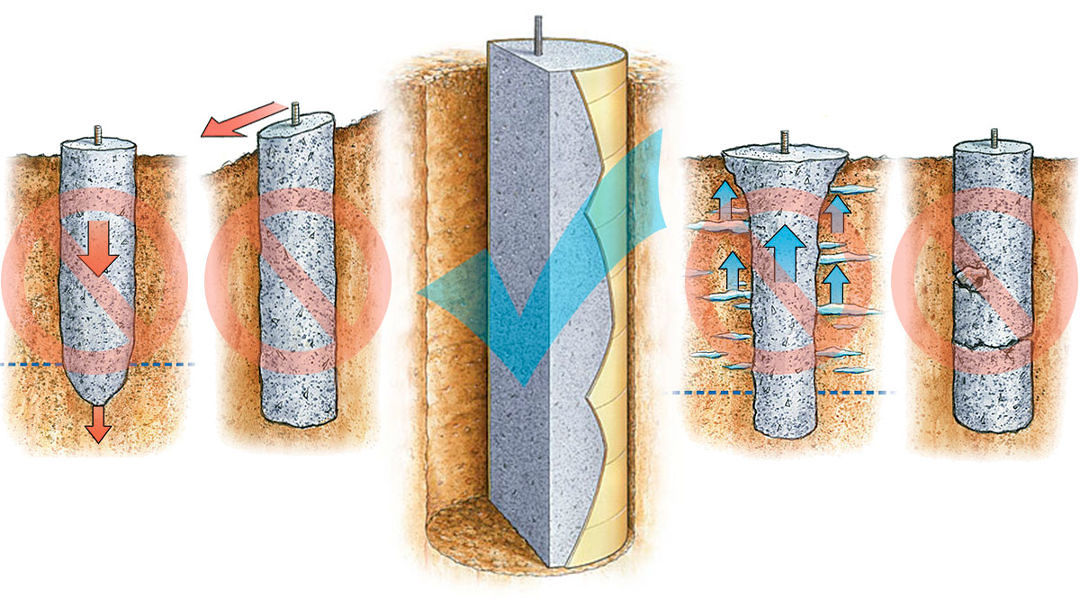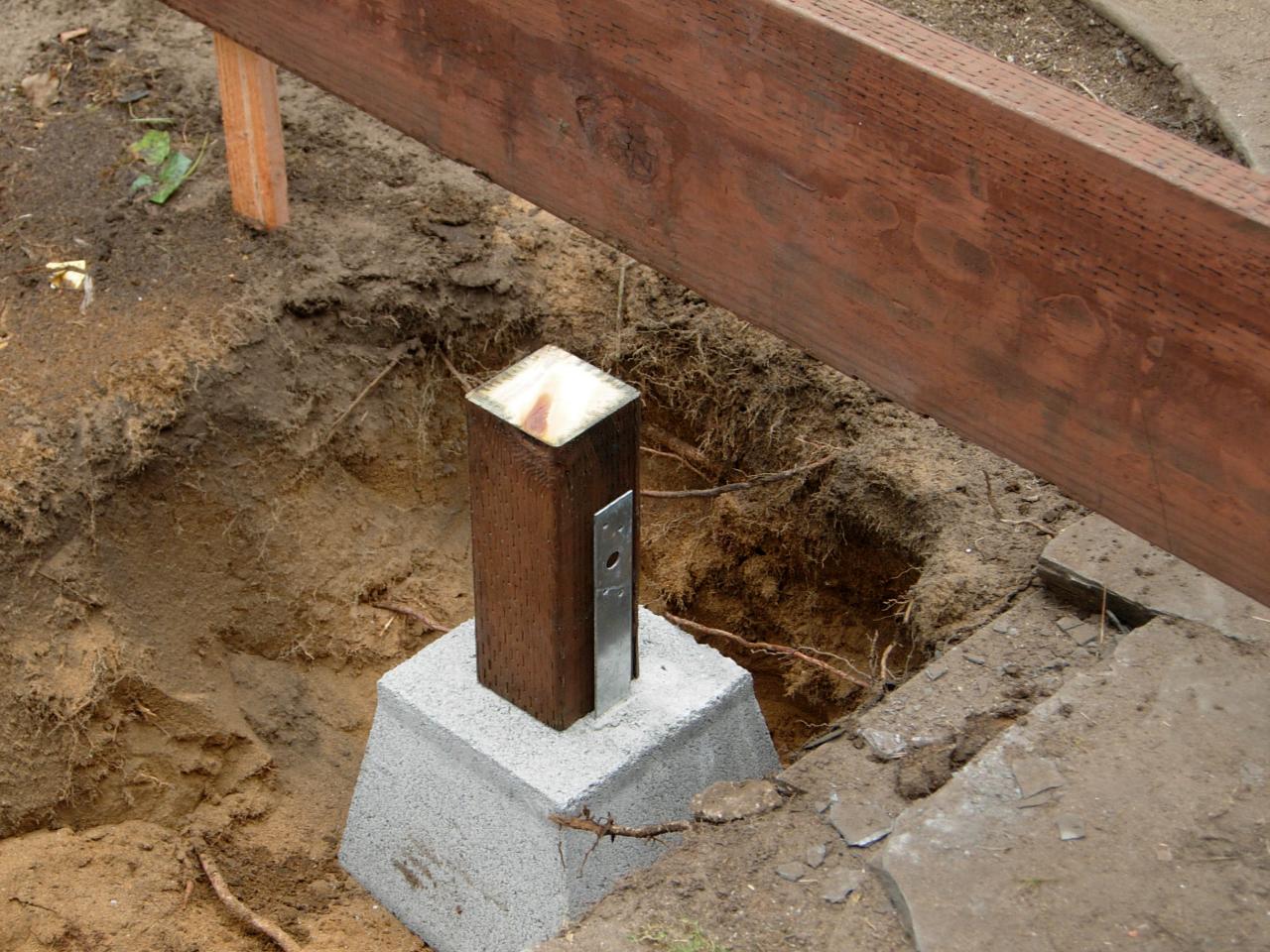Essential Tips for Solid Deck Ground: A Comprehensive Overview
Constructing a deck is an investment that calls for mindful planning and interest to information, specifically when it comes to the ground. This overview will cover critical aspects such as selecting the best materials, examining dirt problems, determining lots capability, establishing proper ground depth, and attaining precise installation. Allow's dive right into the globe of solid deck footing and establish a structure you can count on.
Choosing the Right Deck Footing Materials
When selecting the appropriate deck ground materials, it is necessary to take into consideration the specific needs and demands of your job. The top quality and durability of the footings directly affect the stability and durability of the deck framework. There are numerous variables to consider when selecting deck footing materials.
One crucial factor to consider is the kind of dirt in your location. Various dirt kinds have varying load-bearing capabilities and drain residential or commercial properties. Clay dirts have a tendency to maintain water, while sandy soils drain quickly. Understanding your dirt problems will certainly assist you choose footings that can effectively sustain the weight of the deck and stop problems such as heaving or sinking.
Another variable to think about is the climate in your area. Severe temperatures, dampness levels, and freeze-thaw cycles can affect the efficiency of deck footings. In cool climates, as an example, frost heave can create footings to crack or change. In such situations, using frost-resistant products or installing grounds below the frost line can aid alleviate these risks.
Furthermore, the size and layout of your deck must additionally affect your option of footing materials. Larger or more complex decks may need much deeper or enhanced footings to make certain sufficient assistance. Understanding the certain lots requirements of your deck will certainly aid you identify the ideal materials to utilize.
Inevitably, selecting the best deck ground products involves cautious factor to consider of factors such as soil problems, environment, and deck design. By taking these elements right into account, you can pick grounds that offer the needed assistance, enhance the stability of your deck, and ensure its durability.
Appropriately Analyzing Soil Conditions
To correctly examine dirt problems for your deck ground, it is essential to completely examine the load-bearing abilities and water drainage residential properties of the dirt in your location. Recognizing the dirt's capacity to birth weight and its capacity to drain pipes excess water will certainly aid ensure the stability and longevity of your deck.
When assessing the load-bearing capacity of the soil, it is essential to think about factors such as dirt density, type, and compaction. Different dirt kinds have differing load-bearing capabilities, with compacted soils generally offering far better assistance than loosened or sandy soils. Conducting a dirt examination can supply important information about the dirt's capacity to support the weight of your deck.
Additionally, evaluating the drainage properties of the dirt is important to stop water build-up and potential damages to your deck - Deck Footings. Poor drain can result in moisture buildup, which can damage the structure and trigger structural concerns. It is very important to evaluate the dirt's capability to drain water properly to prevent these problems
Consulting with a specialist engineer or dirt professional can significantly assist in effectively examining soil problems for your deck footing. They can provide experienced recommendations and assistance, ensuring that you select the ideal ground design and products based on the certain characteristics of the soil in your location. Putting in the time to thoroughly examine soil conditions will assist you develop a long lasting and solid deck.
Computing Load Ability for Footings
One vital action in guaranteeing the security of your deck is to accurately compute the lots capacity for your footings. Deck Footings. The tons ability refers to the maximum quantity of weight or lots that the grounds can safely support without creating any kind of visit this web-site structural damage or failing. Computing the load capability for grounds entails considering different variables such as the dimension and type of footings, the sort of dirt, the measurements and weight of the deck, and the real-time load and dead load that the deck will undergo
To compute the load capability, it is essential to consult regional building ordinance and regulations as they offer details guidelines and requirements for deck building. These codes take right into account factors such as soil bearing ability, frost deepness, and minimal footing dimensions. Furthermore, it is crucial to engage the solutions of an expert contractor or an architectural designer that can do the needed computations and evaluations to make sure the security and stability of the deck.
When calculating the load ability, it is important to accurately determine the real-time tons and dead tons that the deck will experience. The live load describes the weight of individuals, furniture, and any various other products that will be placed on the deck, while the dead load describes the weight of the deck itself. By precisely identifying these loads and considering all pertinent variables, you can make sure that your footings are effectively created to support the weight and keep the security of your deck.
Guaranteeing Correct Footing Depth
Correct footing deepness is vital for making sure the stability and durability of your deck. The depth at which the grounds are set up directly affects the architectural stability of the deck, as it identifies just how well the grounds can withstand the pressures put in by the deck and the soil under it.
When figuring out the appropriate footing deepness, numerous factors should be taken into consideration. In areas with expansive clay soil, much deeper grounds might be required to supply ample support.
To identify the correct ground depth, it is recommended to talk to an architectural designer or structure assessor that can assess the particular problems of your website and give guidance based on local building ordinance and guidelines. They will certainly take into consideration factors such as soil composition, water level level, and expected lots to establish the minimum needed ground deepness.
Setting Up Footings With Precision
Installing footings with accuracy is essential for ensuring the security and architectural stability of your deck. Correctly set up footings provide a strong foundation, guaranteeing that your deck can hold up against the weight of furniture, individuals, and various other loads. To install grounds with precision, there are several vital actions to follow.
To start with, it is check out here vital to precisely mark the area of each footing. This can be done by using a string or chalk line to develop a clear rundown. By measuring and noting the precise positions, you can make sure that the footings are equally spaced and lined up.
Next, you require to dig the holes for the grounds. It is important to dig them to the correct deepness and size, as specified by local building regulations and regulations. This will certainly supply adequate assistance and prevent the deck from moving or sinking over time.
When the openings are dug, it is very important to level and small the dirt at the end of each opening. This will develop a stable base for the ground to sit on and protect against any type of settling or activity.
After preparing the holes, you can continue with pouring the concrete. Make use of a concrete mix that appropriates for grounds and comply with the supplier's directions for blending and pouring. Make certain that the concrete fills the holes entirely and is level with the ground surface area.
Lastly, enable the concrete to cure correctly prior to waging the construction of your deck. This will make certain that the grounds are steady and solid, providing a protected structure for your deck.

Verdict
To conclude, making certain strong deck footing is important for the stability and longevity of a deck framework. By choosing the appropriate ground materials, evaluating dirt problems, computing tons capability, and setting up footings with precision, the threat of structural failure can be minimized. Adhering to these crucial suggestions will certainly aid develop a strong structure for any deck task.
Understanding your dirt conditions will assist you pick grounds that can efficiently sustain the weight of the deck and stop problems such my response as sinking or heaving.
Consulting with a specialist designer or soil specialist can considerably assist in effectively examining soil problems for your deck footing. Computing the load ability for footings entails thinking about numerous elements such as the dimension and type of grounds, the type of dirt, the dimensions and weight of the deck, and the online lots and dead tons that the deck will certainly be subjected to.
